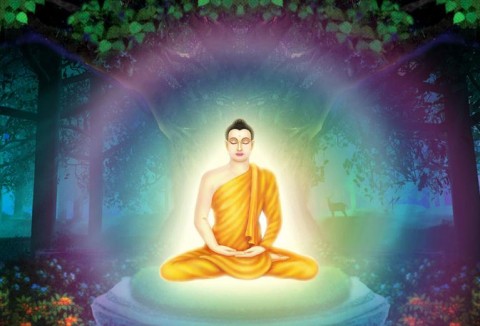Buddhism. For most people the word Buddhism reflects tranquillity and peace of mind, monks in orange robes and non-violence. But when exactly did Buddhism start? What are the important festivals and celebrations?
Architecture of Buddhism takes a closer look where Buddhism got its origins from.
Quick facts about the history:
The founder of Buddhism was a royal prince named Buddha Shakyamuni also known as Siddhartha Gautama, born some 2500 years ago in Lumbini, a place initially in India but now located in Nepal. The exact birthdate is often debated while many authorities favour 623 BC, others around 400 BC.
The legend says that his father kept him away from the outside of the palace and aiming to not make him aware of the world’s common sufferings: aging, sickness and death.
He had hoped that Shakyamuni would become a great king, despite knowing that his future has been several times prophesied to become great spiritual leader. Buddha spent the first part of his life fulfilling his duties in the royal palace of the family. When he reached his late 20’s, curiosity of life beyond his palace grew and grew, eventually letting him start to explore the surroundings. He was abruptly confronted with reality when he saw old men and diseased people.
By the age of 29 he embarked on a spiritual quest to understand how human suffering could be overcome. After six years he attained enlightenment under the Bodhi Tree (tree of awakening) where he sat for 49 consecutive days and practiced meditation and fasting.

Important dates & festivals
Buddhist celebrations and festivals differ from country to country.
Buddhist holidays are celebrated at different times in different parts of Asia. Similar with Hindus, the dates are based on the lunar calendar and not the Gregorian calendar, speaking Buddhist holidays have no fixed dates as for example Christmas Eve on 24th December. We summarized the most important ones below:
Vesak Day – Is the most important Buddhist festival, as Buddhists celebrate the birth, enlightenment and the death of Buddha on the same day, the first full moon day in May.
Buddhist New Year – The Buddhist New Year is celebrated on different dates throughout the world: Theravadin countries (mainly Southeast Asia) celebrate for three days on the first full moon day in April while Mahayana countries (China, Japan and Korea) celebrate on the first full moon day in January. It is well known as ‘Songkran’ in Thailand, which attracts every year thousands of tourists to participate in “water-gun battles”, mainly in the streets of Bangkok and Chiang Mai.
Ancestor Day – Mainly celebrated in Mahayana countries on the first day of the eighth month, ghosts come to visit the world for 15 days. Food offerings are given on the first 14 days in order to relieve the ghosts from suffering. On day 15, people are visiting cemeteries to honour their ancestors.
Dhamma Day – Dhamma Day is celebrated on the full moon of the eighth month (July) in honour of Buddha’s first sermon.
Moreover, a few countries celebrate even unique, regional Buddhism holidays, such as ‘The Festival of the Tooth’ in Sri Lanka or ‘The Elephant Festival’ in Thailand.

Different colours of robes & short hair
If you visit Southeast Asia, keep a close eye to the slightly different colours of the monk’s robes; Theravada Buddhists usually wear orange, while Tibetan monks wear a more maroon colour. Why orange/maroon? Because people used to dye clothes with the cheapest materials available – wood and tree rubber. The colours have remained the same since then.
The short hair symbolizes simplicity and detachment of materialism – how many times have you thought in the morning that your hair looks horrible?
Buddhism in daily life
Buddhism is officially one of the world’s major religions with about 350-375 million adherents or roughly 6.5% of the world’s population. Though mainly South East and- East Asian countries consider it as a main religion, many other people across the world taking over the beliefs as their own spiritual path, particular through meditation.
In Thailand for example, Buddhism is not only the main religion, but also the centre of life. Daily activities are based around The Four Noble Truths, also known as the key elements of Buddha’s teachings:
– The truth of suffering (dukkha)
– The truth of the cause of suffering (samudaya)
– The truth of the end of suffering (nirhodha)
– The truth of the path that frees us from suffering (magga)
Monks are highly respected by the community; they usually walk around the streets and neighbourhoods early in the morning to collect alms, give blessings and spiritual advice to the people.
Also worth mentioning is that every male Thai should serve as a monk at least once during his life; it is tradition that a boy or young man will stay in a monastery for a short period of time to honour his parents and prior to getting married. Also, if the parents should pass away, male Thais will turn into a monk for three days.
Thais strongly believe in Karma and Samsara:
Samsara is the repeating cycle of birth, life and death, which goes hand in hand with Karma, speaking if you do something good you will receive good and vice versa.